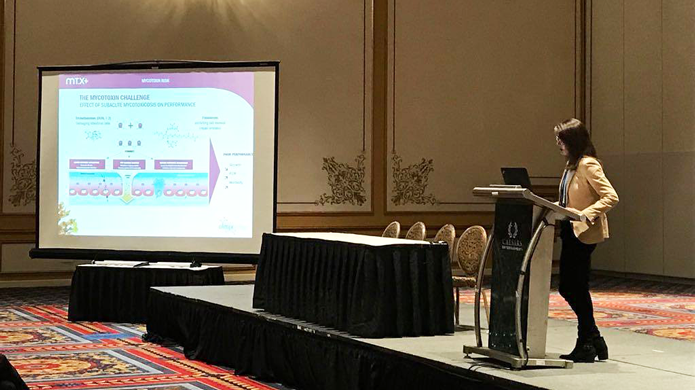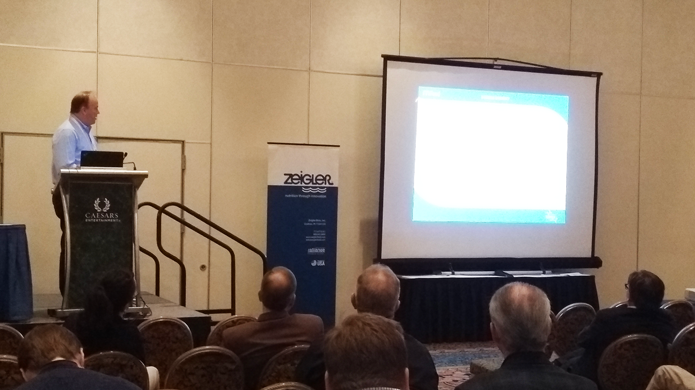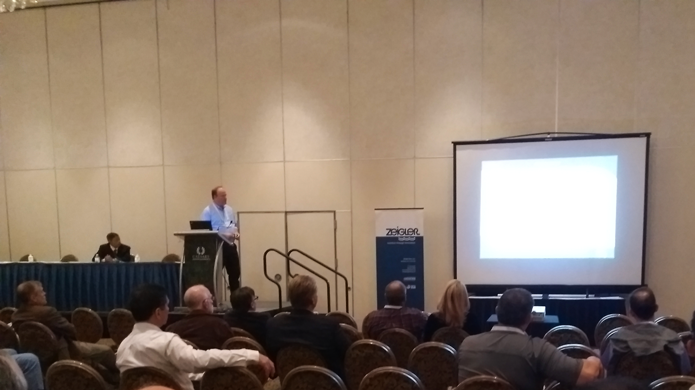Once again, Aquaculture America proved itself as one of the major events within the aquaculture industry not only in the USA, but all around the globe. With nearly 200 booths and a conference program that continues to improve its technical quality every year, the event attracted thousands of professionals that had the chance to discuss the main issues that producers are facing these recent years such as aquatic animal health, environmental issues, farm energy cost reduction and regulatory costs, among others.
In this context, Olmix Group made its appearance at booth 216, where the Animal Care team presented the value of the Olmix’s natural algae-based products for aquaculture. They met with several Latin and North American partners, as well as opening new market opportunities within these territories.
Mycotoxin risk and bacterial diseases, at the heart of the symposium

The Olmix Animal Care at booth 216.



